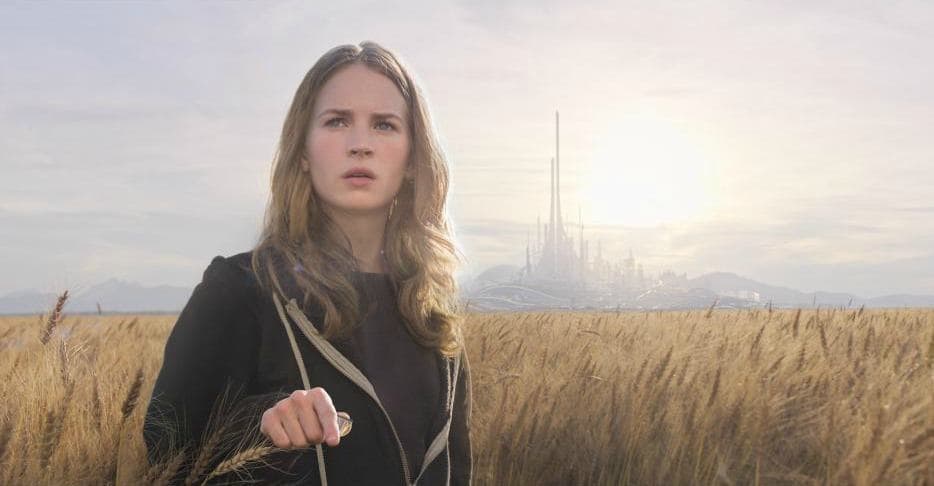When it isn’t taking itself too seriously, “Tomorrowland” boasts vivid graphics and imaginative storytelling.

Rating 4.0/5.0
Directed by Brad Bird
Starring George Clooney, Hugh Laurie, Britt Robertson, Raffey Cassidy
Rated PG
Release Date: May 22
If you like vaguely optimistic statements, grumpy George Clooney, smart heroines or stunning visuals, you should thoroughly enjoy “Tomorrowland.” In other words, it’s a movie everyone can like if you sit back and don’t ask too many scientific questions.
Casey Newton (Britt Robertson) finds a mysterious pin in her possession. This pin temporarily transports her to idyllic wheat fields and a utopic future city of soaring towers and great feats of engineering and physics. However the pin runs out of time and leaves Casey longing for this beautiful ideal of the future. The audience is also left longing for more of the utopia because that sequence contains most of the actual Tomorrowland screen time.
Tomorrowland is like you’ve seen it in Disneyland: disgustingly optimistic, a bit 50s retro and lacking in tangible science. But it is also visually stunning and imaginative, with steel ships that fly overhead and diving pools that defy gravity. The inhabitants are inventors, scientists and artists who are recruited to live and create in this utopia away from the politics and greed of Earth. It’s no wonder that Casey is desperate to return to the world of her vision. But all entrances have been shut down and guarded by robot G-Men.
Enter an irascible Clooney. Clooney plays Frank Walker, a Tomorrowland recruit who has grown bitter and isolated after he was cast from utopia. He is a sharp contrast to the cheerful, determined and optimistic boy whom we get to know through quaint flashbacks. He teams up with Casey to return to Tomorrowland in a whirlwind of explosions, secret rocket ships and hidden dimensions.

The whole movie is wrapped in optimism and encouragement that is refreshing after watching your third dystopian movie featuring distressed heroines. However, director Brad Bird isn’t subtle about it. In fact, he beats you over the head with his message of positivity and chokes the movie with cliches. It is hard to count the number of times Casey says, “Anything is possible” or something else generic and inspiring. About halfway through the film, it becomes a bit repetitive with encouragements for the next generation when you really just want to see the cool technology of Tomorrowland.
Despite her gooey positivity and exaggerated childlike enthusiasm, Casey is otherwise a refreshingly new kind of heroine. There are no contrived romances or distressing female stereotypes for Casey; instead, she uses her determination to pull Frank from his bitter isolationism. The two exchange quick repartee throughout the film as she matches wits with him.
“Tomorrowland” fails when it tries to be more parable than Disney movie but is thoroughly enjoyable when it stops taking itself so seriously. Despite the stunning visuals, the plotline is a jumble of cyborg battles, rocket ships and explosions galore peppered with frequent assertions of the “dreamers will save the planet” cliche. Aside from that, the movie succeeds at catering to the younger generation, and with a little suspension of belief, to an older, more jaded generation too.













